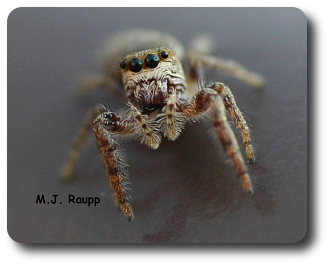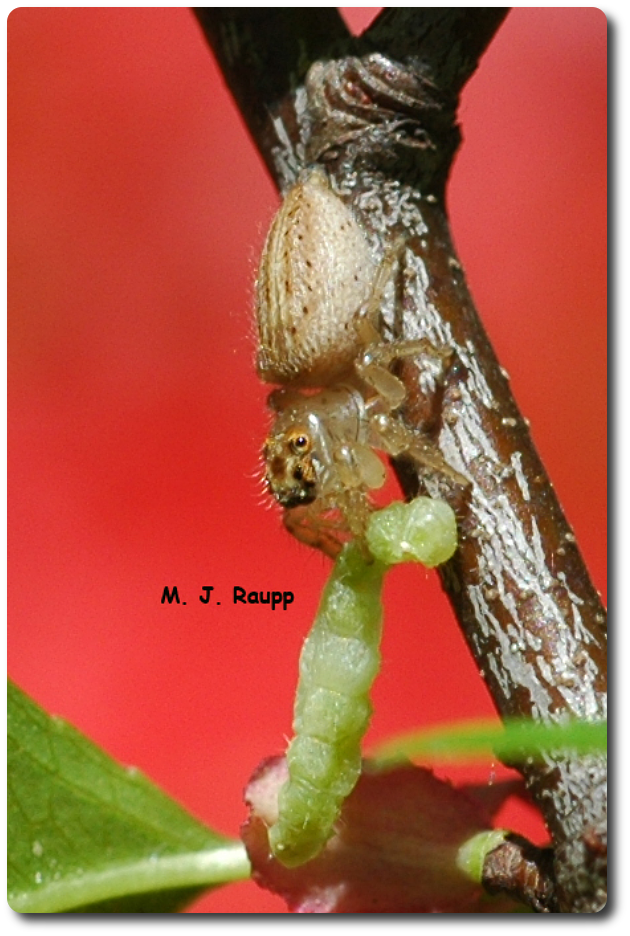On a warmish afternoon last week, while looking for bugs, I crossed a footbridge above a small stream. I happened to spot a quick movement on the handrail and was delighted to discover more than a dozen jumping spiders patrolling the bridge. Many small flying insects emerging from the stream and the nearby forest had the misfortune of resting on the warm metal surfaces of the bridgework.
Jumping spiders eat many pests like this cankerworm caterpillar.
Several species of jumping spiders were taking advantage of the bounty on the flat surfaces where prey were easily spotted, tracked, and captured. As I moved my camera closer to one of the jumpers, it turned, stalked me, and with a prodigious leap landed on the lens of my camera. While quite startling, this behavior is common for jumping spiders. The scientific name of jumping spiders, Salticidae, derives from the adjective saltatory meaning something that jumps or leaps. Before launching, jumping spiders attach a silk line to the substrate. A lifeline back to the limb of a tree or a bridge is a handy trick in case you miss your target while foraging far above the ground. Jumping spiders are distinguished in part from their spidery kin by a row of four forward facing eyes in the center of their face. The center most pair of eyes is quite large. These magnificent peepers give salticids among the best vision of any arthropod.
Red hairs on the abdomen and metallic green fangs adorn the gorgeous jumping spider from California.
Salticids are extraordinarily good at detecting motion and tracking prey. Scientific studies have demonstrated their ability to follow complex routes to capture prey once a potential victim has been spotted. Jumping spiders are among the most beneficial biological control agents found in our landscapes. They consume a wide variety of plant eating pests including leafhoppers, lace bugs, and caterpillars. Their excellent vision is also used in courtship behaviors to recognize mates. Male jumping spiders often wave their front legs in the air or wiggle their abdomens as they approach members of the opposite sex. These behaviors are used by the female to decide whether a potential suitor is worthy of her attention. For the male contestants in this eight-legged version of 'Dancing with the Stars', his performance could be the difference between life and death. How's that for pressure?
Jumping spiders are among the most amusing and curious of spiders and will often approach a camera or finger pointed in their direction. I have had many as pets including a red and black beauty captured in California. Although I have never been bitten by one, there are accounts of bites from jumping spiders that have resulted in minor irritations and discomfort. So, if you make these your pets, please handle them carefully.
References
We thank Rebeccah Waterworth for donating the gorgeous red and black jumping spider featured in this Bug of the Week. To learn more about the ecology and behavior of jumping spiders, please read the excellent book 'Biology of Spiders' by Rainer F. Foelix or visit the web sites listed below:
http://www.users.qwest.net/~phidippus/
http://tolweb.org/notes/?note_id=65


